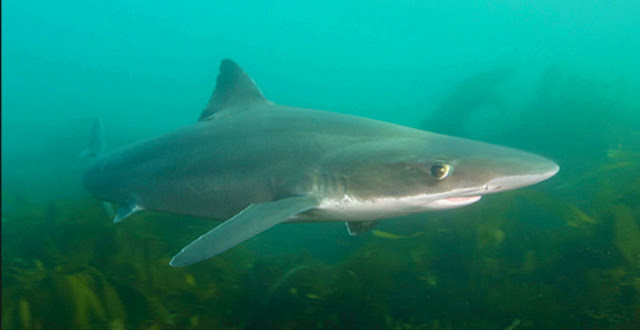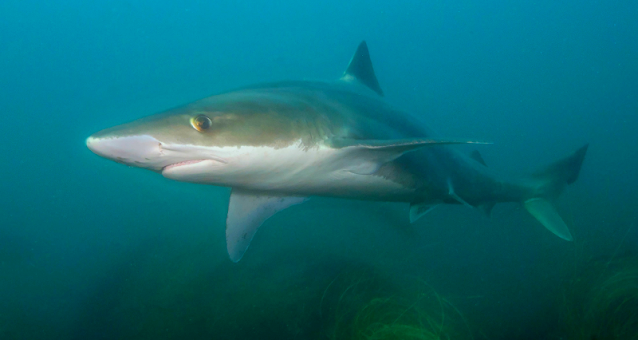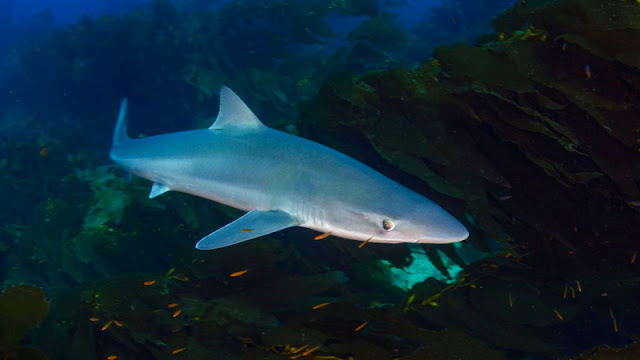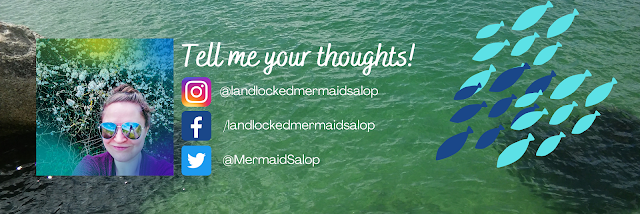Bruce and Chum's Marine Creature of the Month ~November 2021~
Bruce and Chum are back! They blame their yearly migration habits for not posting since July. It's definitely that and not the fact I cannot hold a routine for more than three days. Here's who my plushie friends met on their travels! Drop a comment if you can guess where they went travelling to.
- Name: Tope Shark
- Location: Global, particularly Europe
- Habitat: Coastal waters, temperate climates
- Diet: Pelagic fish and cephalopods; juveniles eat benthic invertebrates
- Conservation Status: Critically Endangered (CR)
Bruce thinks...
Tope sharks are pretty neat, but their name is a little confusing. They are also called School sharks, Soupfin sharks, Snapper sharks, and Vitamin sharks. Not sure why they have so many names - apart from Vitamin shark. That name comes from the fact that their flesh, fins, and liver are all high in vitamin A. Maybe if I eat one, I'll be able to see in the dark.
Chum says...
Tope sharks are big travellers like Bruce and I. One was tagged off the coast of Scotland and was later located by Sicily. That's quite the trek!
Ten Jawsome Facts
- The name might be ringing some bells, because these sharks have been in British news recently. Along with two other types of shark and seahorses, they have been found in the river Thames.
- It's believed that they use the London estuary to birth their young, which then stay in the sheltered environment as they grow. The Thames is a shark nursery.
- Tope sharks are an ovoviviparous breed of shark. This means the female's eggs are fertilised internally and remain inutero until ready to hatch. The young are born alive, similar to mammals.
- These sharks live for over 50 years and can be up to 190cm long.
- Historically, they were hunted for their vitamin dense oil and flesh. Unfortunately, Tope sharks have been overexploited and thus have a critically endangered rating on the IUCN.
- They way to spot if the shark is a Tope is down to the fact they have two dorsal fins and a distinct notch on their tail.
- The Tope shark should add "Lonely shark" to its list of names, it is the only member of the genus Galeorhinus.
- Migratory animals, they spend their winters at the equator and move towards the poles when pupping.
- They only give birth to pups every two to three years, but have been observed returing to the same place every time.
- Tope sharks are truly not fussy eaters - they'll have whatever is going and plentiful! They'll eat deep sea critters, benthic yumyums, and even in open waters.
Bonus fact! There has never been a recorded instance of them being aggressive to humans. So next time you see a fear mongering article from the newspapers, call them out on it. Tell them to mind their language!
Final Say
Bruce: Happy to see my friends back in the Thames 9/10
Chum: Tope-ally cool that we have more sharks in the UK 8/10









Comments
Post a Comment